Classifying Data
Finding patterns in complex datasets, emphasizing aspects we think are important.
Descriptive Statistics
| Operation | Nominal | Ordinal | Interval | Ratio |
| Equality | x | x | x | x |
| Counts/Mode | x | x | x | x |
| Rank/Order | x | x | x | |
| Median | ~ | x | x | |
| Add/Subtract | x | x | ||
| Mean | x | x | ||
| Multiply/Divide | x |
Measures of Central Tendency
Highlight the “central” feature in a dataset.
- Mode: The most frequent value in a set
- Median: The middle value in a set
Data is ranked to find the center point
- 50% above, 50% below+ Not impacted by outliers
- Mean: The sum of all values divided by the number of values
- Impacted by outliers
Measures of Dispersion
These statistics give context a measure of central tendency.
- Range: Difference between the maximum and minimum
- Inter-quartile Range: 75th to 25th percentile
- Spread around the median, not influenced by outliers
- Standard Deviation: \(\sigma = \sqrt{\frac{1}{N}\Sigma_{i=1}^n (x_i - U)^2}\)
- Spread around the mean(U), influenced by outliers
Frequency Distribution
Frequency of occurrence, typically in a qualitative dataset.
- Bar charts help visualize frequency distributions
- Counts per category
Probability Distribution
Probability of occurrence in a quantitative dataset.
- Normal Distribution:
- Idealized, based on distance from the mean in standard deviations.
- Assumed in many statistical tests.
| ±1 \(\sigma\) | 68% obs. |
| ±2 \(\sigma\) | 95% obs. |
| ±3 \(\sigma\) | 99.7% obs. |
Histograms
Sorts and groups data into bins of consistent width.
- Approximate a probability distribution
- Grouping data into classes
- Outlier detection
- Not the same as bar charts

Deviating from the Norm
Data rarely fits a normal distribution perfectly:
Skew: deviates from a normal distribution
Tails with outliers
Kurtosis: deviates from a normal distribution
Dispersed or clustered
Near Normal
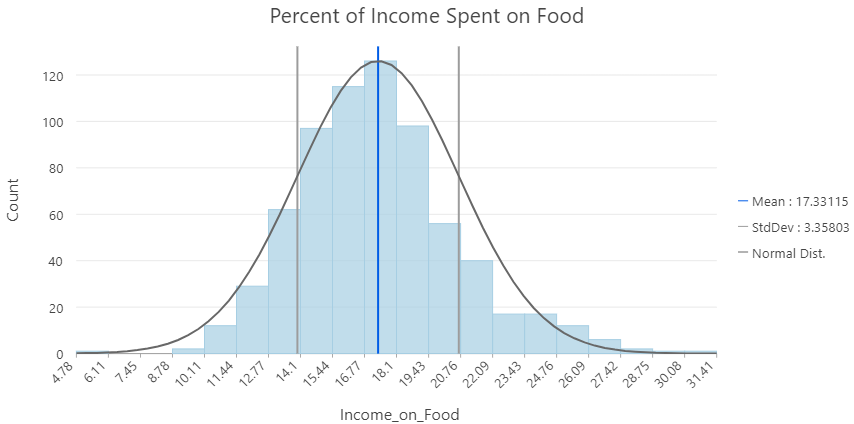
Deviating from the Norm
Data rarely fits a normal distribution perfectly:
Skew: deviates from a normal distribution
Tails with outliers
Kurtosis: deviates from a normal distribution
Dispersed or clustered
Skewed Normal
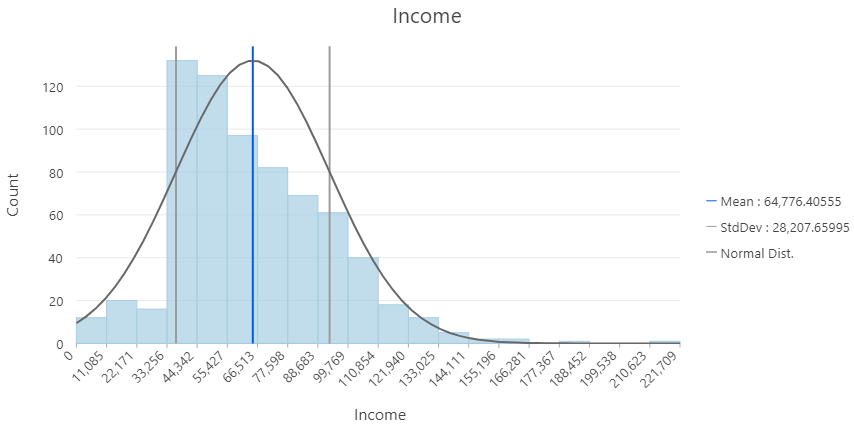
Deviating from the Norm
Data rarely fits a normal distribution perfectly:
Skew: deviates from a normal distribution
Tails with outliers
Kurtosis: deviates from a normal distribution
Dispersed or clustered
Highly Skewed
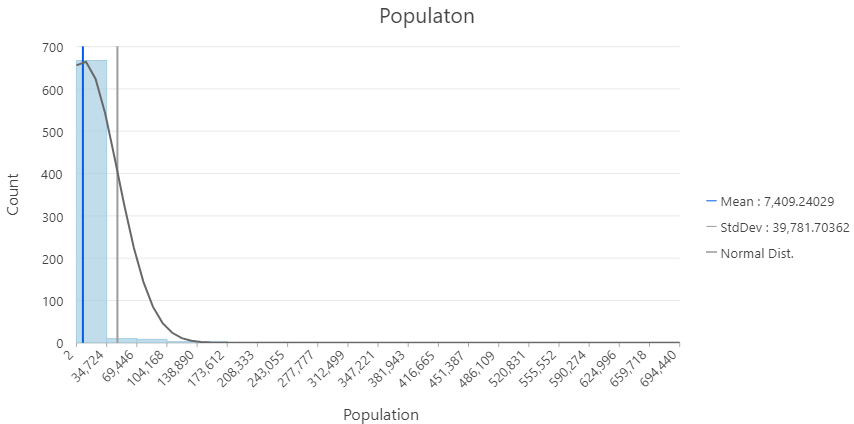
TopHat Question 1
If you are working with nominal or ordinal data, and you want see how many observations you have for each category, you would use:
- A histogram to plot a probability distribution
- A histogram to plot a frequency distribution
- A bar chart to plot a probability distribution
- A bar chart to plot a frequency distribution
Normalizing Data
Scaling a variable by another can reveal hidden patterns in our data.
- Income vs. money spent on food
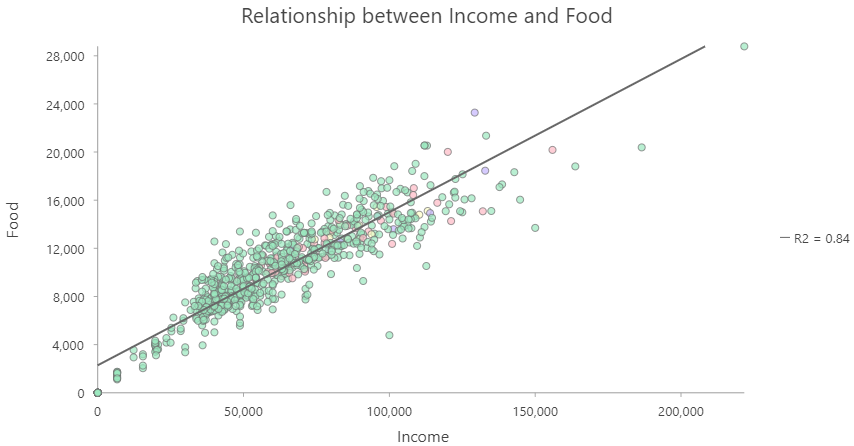
Highly Correlated
Normalizing Data
Scaling a variable by another can reveal hidden patterns in our data.
- Income vs. money spent on food
- Population vs. shape area

No Correlation
Multiple Confounders
Not always straightforward to account for multiple variables.
- e.g., COVID by age groups

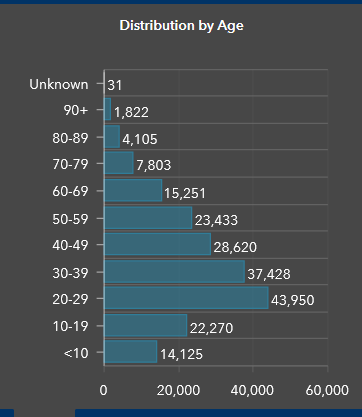
Standardizing
Allow us to compare between two or more variables in different units / scales.
- \(z = \frac{x-\overline{U}}{\sigma}\)
- Similar to normalizing:
- Remove the mean and standard deviation from multiple variables
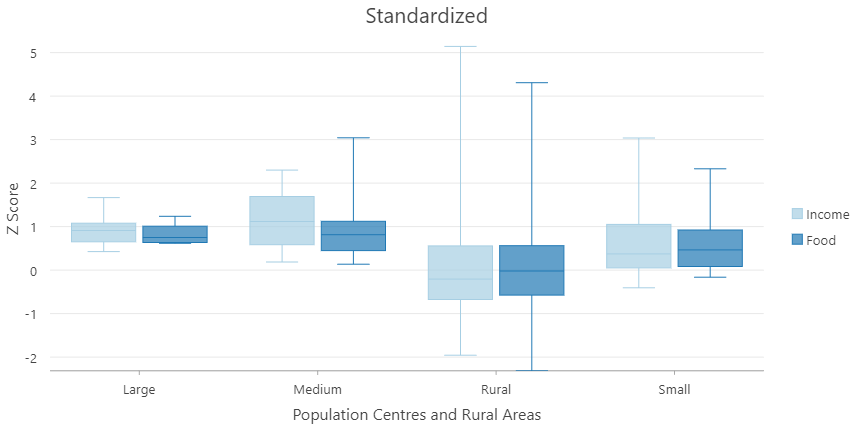
TopHat Question 2
Which of these countries has the highest population density? Populations and Areas are approximate.
- Monaco: Pop (37,000), Area (2 km2)
- Singapore: Pop (5,500,000), Area (720 km2)
- China: Pop (1,400,000,000), Area (9,600,000 km2)
Classification Methods
Unsupervised:
- Data defined classes - the user decides on the number of classes
- The rest is left of up to an algorithm
Supervised:
- User defined - the user explicitly defines classes
- Or provides set of classes as training data
- Degree of user input is variable, more than unsupervised
Common Examples in Arc Pro
Vancouver dissemination areas by population total:
Not classified
- Color scheme is stretched between min/max
- Difficult to see patterns
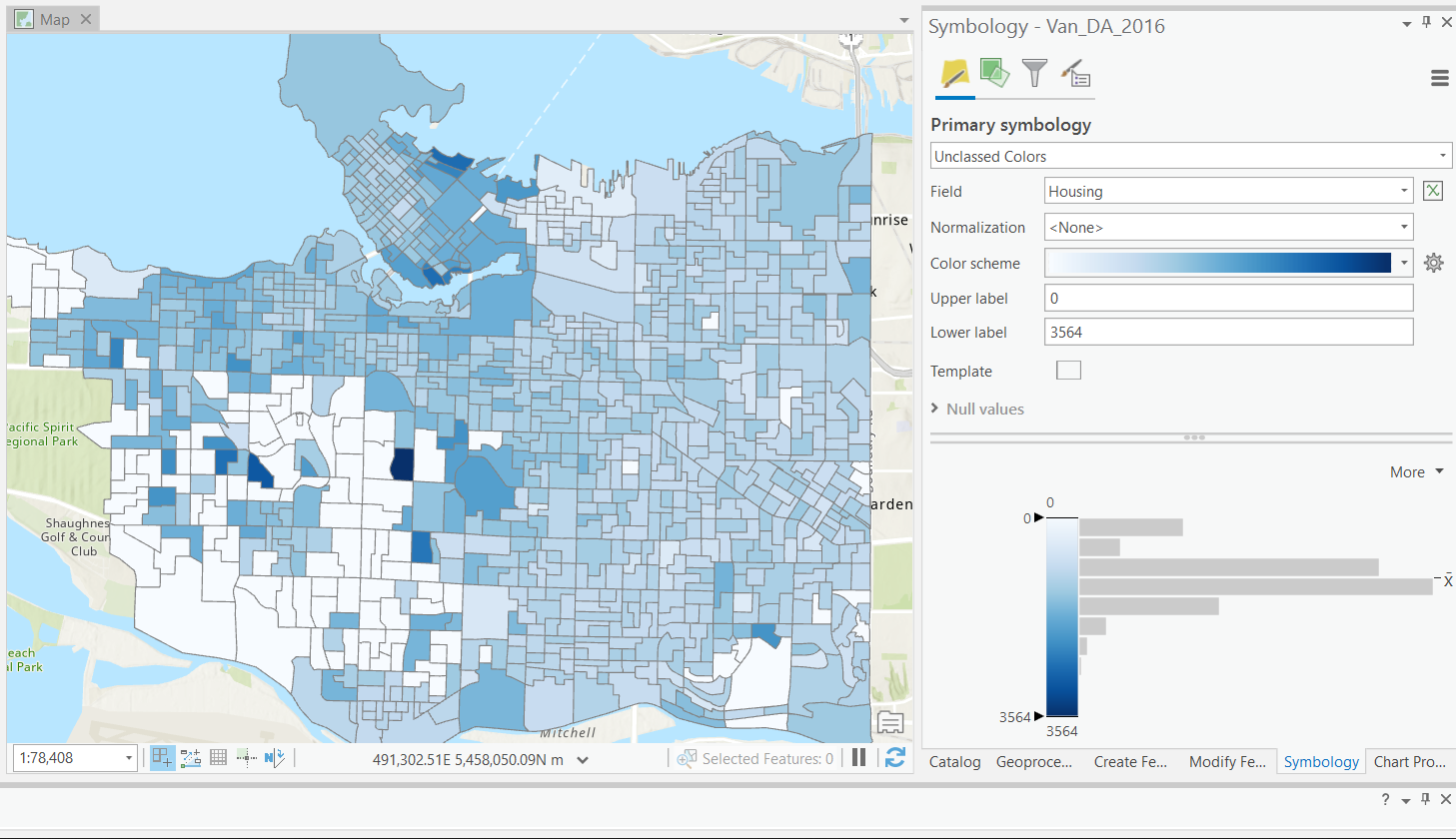
Equal Interval
One of the simplest classification schemes.
- Data is split to classes of equal width based on the range.
- Unsupervised: user defines number of bins.

Defined Interval
Another of the simplest classification schemes.
- Data is split to classes of equal width based on the range.
- Unsupervised: user defines bin width.
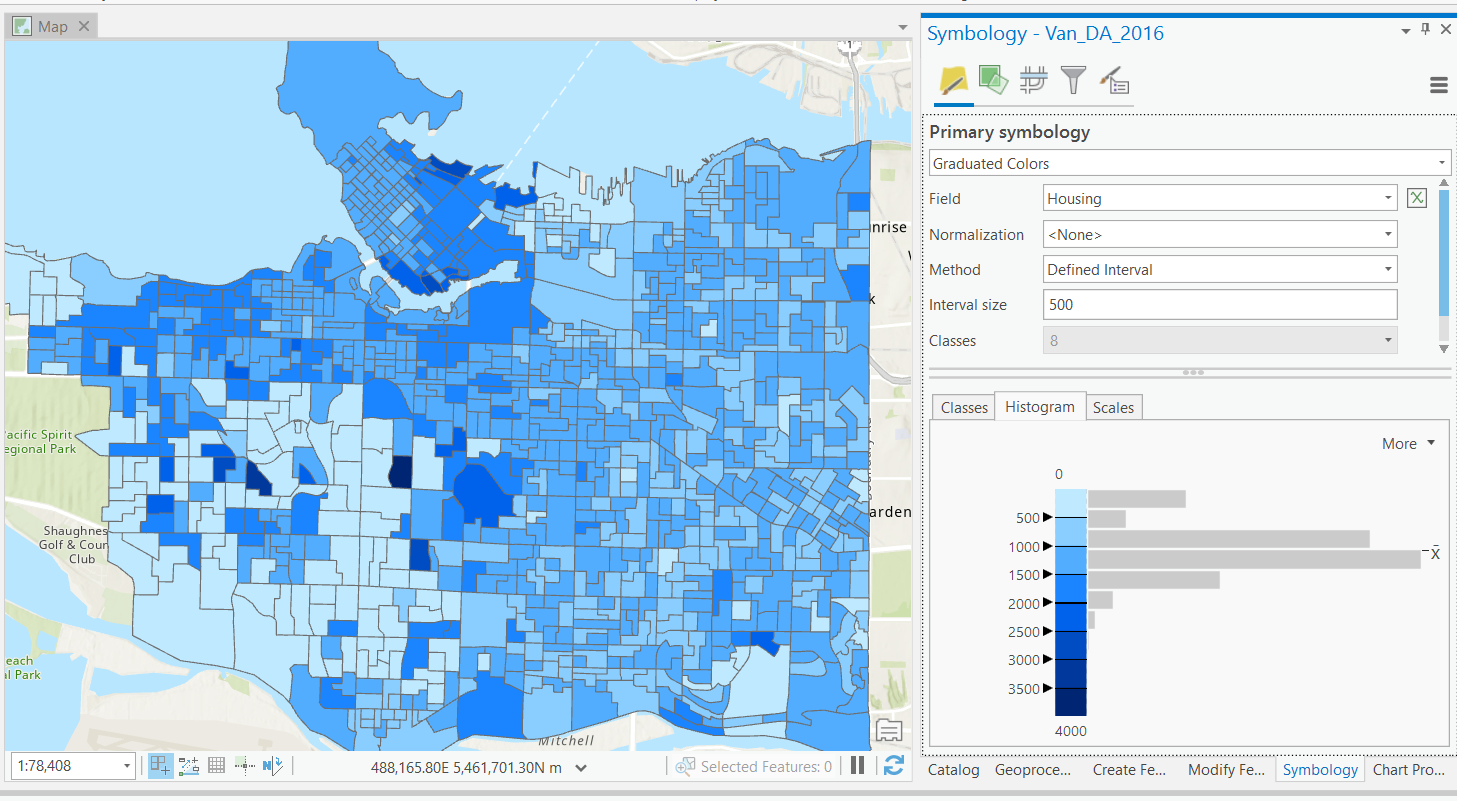
Quantiles
Slightly more complex classification scheme.
- Data is split into classes by percentiles.
- e.g. 0-20%, 20-40%, … 80-100%.
- Unsupervised: user defines number of bins.

Natural Breaks
More complex, data is split using the Jenks algorithm.
- Optimizes splits, by maximizing within group similarity and between group dissimilarity.
- “Natural” classes.
- Unsupervised: user defines number of bins.
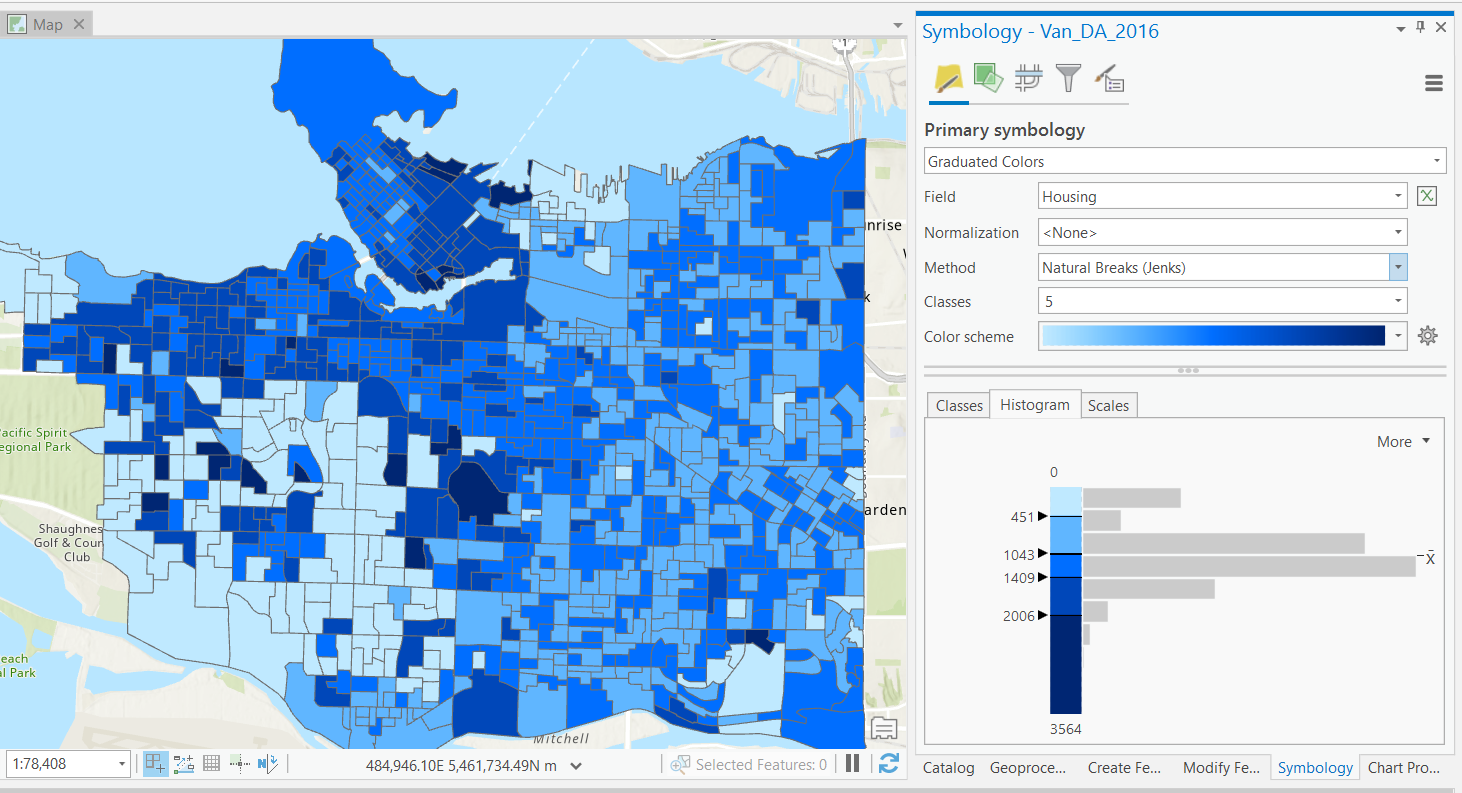
Standard Deviation
Informative to “experts”, but not accessible for all audiences.
- “Distance” from mean in standard deviations.
- Interval data: diverging color maps.
- Unsupervised: user defines number of bins.
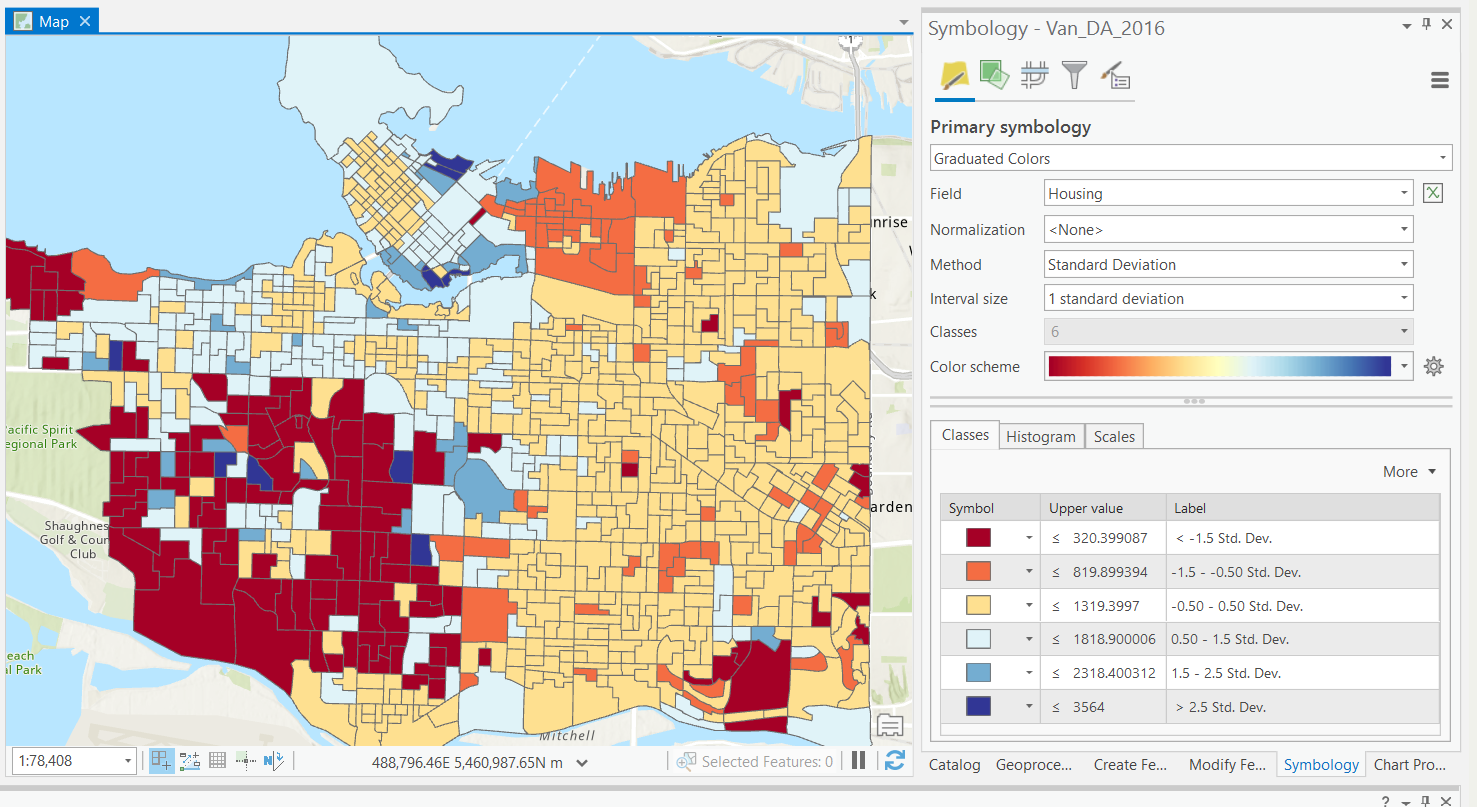
Manual Breaks
Supervised: User defines break values.
- Allows us to choose more meaningful break values if necessary.
- Incorporate multiple factors
- Influence the way the data is perceived.

TopHat Question 3
This classification method seeks to maximize the similarity between data values within groups and maximize the dissimilarity in data values between groups. It tries to find the “optimal” splits within a dataset.
- Manual Breaks
- Quantiles
- Natural Breaks
- Equal Interval
- Standard Deviation
More Complex Methods
There are many classification methods that are a bit too complex to actually perform in this course.
- I’m introducing some because they are important to be aware of them.
- You’ll encounter them if you continue with GIS.
K-means
Algorithm uses random steps to group data into clusters.
- Unsupervised: user defines number of bins & iterations.
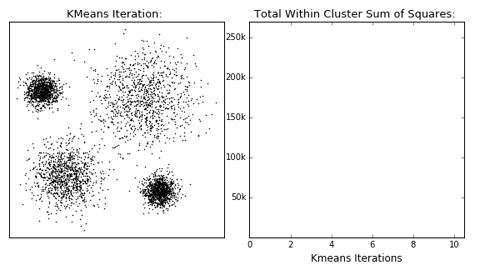
Median Absolute Deviation
Frequently used for automated outlier detection.
- Unsupervised: user defines error threshold.
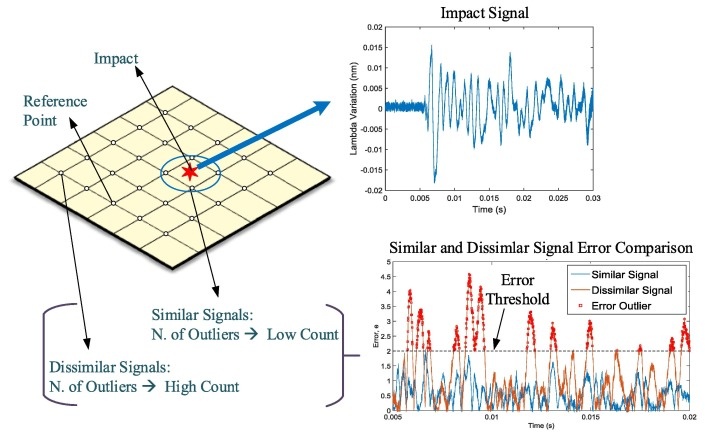
Decision Trees
Fit training data to user defined categories.
- Supervised: user provides training classes.
- Automated: algorithm determines break values.
- Risk of over-fitting

Random Forests
Multiple trees (>100) can be averaged to increase performance and generalization.
- Supervised: user provides training classes and “hyperparameters”.
- Automated: algorithm determines break values.
- Low risk of over-fitting
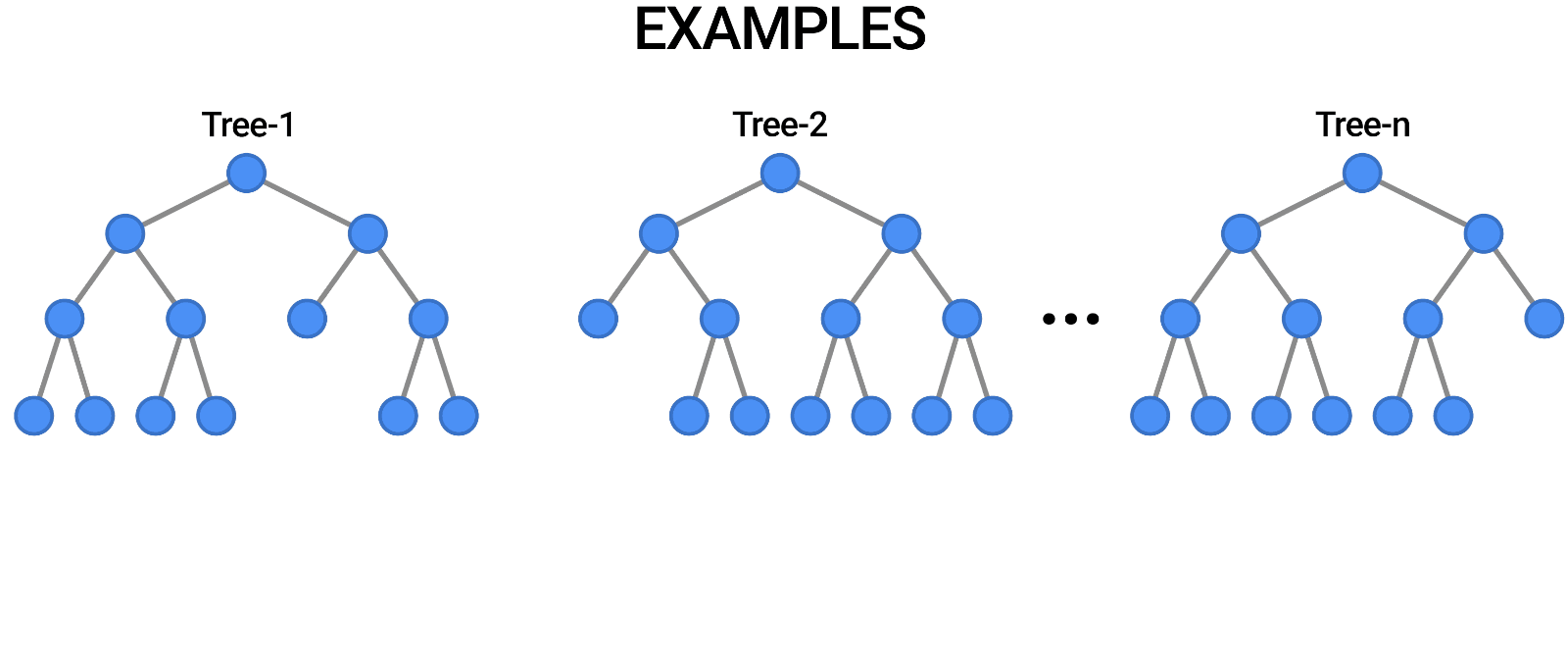
Landscape Classification
Multiple trees (>100) can be averaged to increase performance and generalization.
- Supervised: user provides training classes and “hyperparameters”.
- Automated: algorithm determines break values.
- Low risk of over-fitting
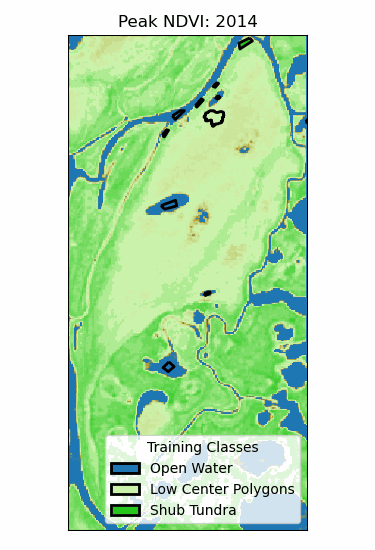
Neural Networks
One of the most complex methods, an algorithm learns complex relationships in dataset.
- Supervised: user provides training classes and “hyperparameters”.
- Risk of over-fitting
- Requires careful inspection
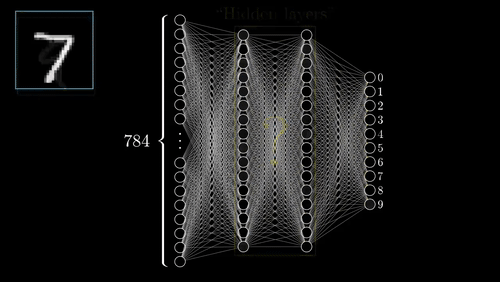
TopHat Question 4
Unsupervised classification methods typically require more user input than supervised classification methods.
- True
- False